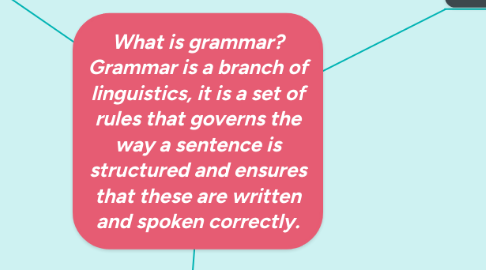
1. There is descriptive grammar and prescriptive grammar, below we will talk about them:
1.1. The term descriptive grammar refers to an objective and non-judgmental description of grammatical constructions in a language in other words descriptive grammar details the ways in which native speakers use their language. For example: Ayer vi a tu prima en el centro.
1.2. The term prescriptive grammar refers to a set of norms or rules that govern how a language should or should not be used, rather than describing the ways in which a language is actually used, that is, it is a set of strict rules about what which is grammatically correct or incorrect. For example: Ayer vide a tu prima por allá.
1.3. The difference between these is that descriptive grammar is more of a study of the "why and how" of language, while prescriptive grammar deals with the strict rules of right and wrong required for language to be considered grammatically correct. For example in descriptive grammar: Conmigo no cuentes estoy muerta!. Now in prescriptive grammar: No cuentes conmigo estoy muy cansada.
2. What are Articles? Articles are a part of speech that you use before a noun most of the time. There are some exceptions in which articles go before any other adjective, both describing the same noun. There are three words the, a, an; two of them are indefinite( a, an) and one is defined (the).
2.1. Indefinite Articles. When you are talking about things that are singular, countable, and indefinite you can use the indefinite article a and an. In English, the indefinite article is only used in the singular (quantifiers like "some" or "any" are used to form the plural) for example: can you give me some money?
2.1.1. -Indefinite article a is used before words starting with consonants sounds. For example: a table, a ship, a plane. -Indefinite article an is used before words starting with vowel sounds. For example: an egg, an honor, an elephant.
2.2. Definite Article. If you are talking about a definite thing, person, place, idea or a noun you have mentioned before, you use the definite article “the” no matter the number, just the fact that it was mentioned before, or the receptor already knows what you are talking about. This article can be used in the plural and singular forms depending on the context. For example: I want the book, I like the flowers.
2.2.1. The definite article the is pronounced (thee) when the next word starts with a vowel sound for example: the open door. And it is pronounced (thuh) when the next word starts with consonant sound for example: the short man.
3. What are Nouns? A noun is a word used to name a person (vet), an object (table), a creature (cat), a place (university), a quality (patience), phenomena (tsunami) and an abstract idea (sadness). We will talk about the different ways we find nouns within grammar.
3.1. A concrete noun is the noun to name things that you can recognized with any of your senses. For example: I have a cat, I will buy a car.
3.1.1. An abstract noun is a noun to name features, ideas, or qualities. For example: love, angry
3.2. There are singular countable nouns and plural uncountable nouns:
3.2.1. A singular noun is the noun to name one person, place, thing, or idea. For example: I have a cat, I will buy a car.
3.2.2. A plural noun is the noun to name more than one person, place, thing or idea. For example: I took a lot of photos, your pets are adorable.
3.2.3. Uncountable Nouns: These nouns can name most of the abstract ideas, things like powders, liquids, gases, and qualities. you cannot use numbers to count them, instead there can be used words named quantifier (many, some, any, a lot, etc) for example: salt, wood, information.
3.2.4. Countable nouns are those that can be counted. For example: a pen, two cats.
3.3. A possessive noun is the noun to show possession, ownership, or the general relationship between two nouns. When a thing belongs to someone or something, you usually add an apostrophe and an s. For example: Johanna’s house.
3.3.1. A compound noun is a noun formed by more than one word to yield a new meaning. This type of nouns can be written in open, hyphenated, or closed. For example: cowboy.
3.4. A common noun is a noun used to name things, people, places and ideas in a general way. This type of nouns refers to a not-specific name. For example: She clean the house.
3.4.1. Propper Nouns on the other hand, are those nouns used to name specific things, people, ideas, or places. For example: The White House.
